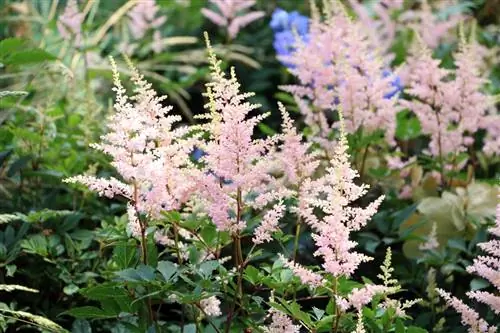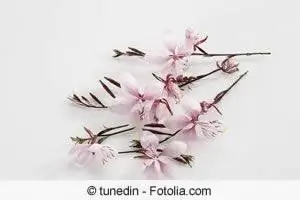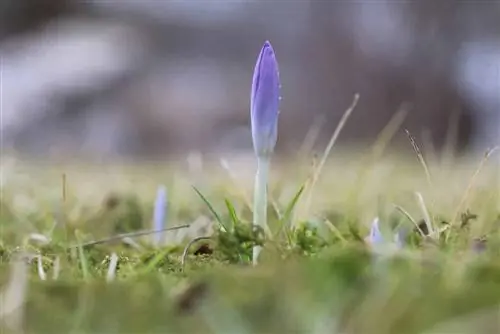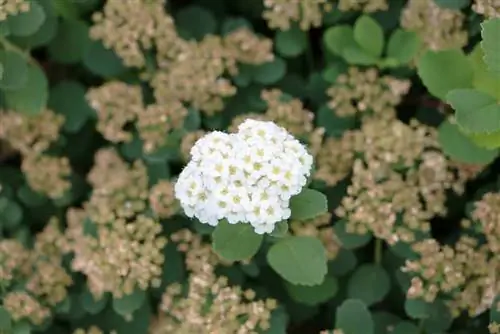- Author admin [email protected].
- Public 2023-12-17 03:39.
- Last modified 2025-01-24 12:45.
Astilbes prefer semi-shady locations in the home garden. The interesting appearance of the plants and the diverse colors make the magnificent spars favorites in garden decoration.
Profile
- Genus of plants originally from Asia
- popular for designing gardens and parks
- can grow up to two meters tall
- carry between 500 and 2000 flowers
- between eight and 24 different species
- Cultivation in a bucket possible
- popular with various insects
- dark green leaves, partially covered in bronze color
Location
The magnificent spars prefer a semi-shady and rather cool location. Sunny locations are possible for the plants if the soil is moist. However, the astilbe does not tolerate high heat. The location should be moist and the soil should contain lots of nutrients.
Tip:
If you have a small stream or pond with shade in your garden in the immediate vicinity, this is the ideal location for the magnificent spar.
Soil & Substrate
Astilbes place high demands on the properties of the soil. This should be rich in nutrients and humus. At the same time, fresh to moist soil conditions are beneficial. The soil structure is preferably permeable. The amount of sand should not be too large. In return, the astilbes love loamy soil. The pH value should be between 5.5 and 6 for the magnificent spar to thrive.
High-quality potting soil made from compost is the method of choice. The proportion of peat should at most be small.
Fertilize
Organic fertilization is recommended from April to August. You can do these every four weeks. At the same time, it is possible to spice up the plants with a slow-release fertilizer after sowing or in summer.
Pouring
When it is dry, the plants need to be watered regularly. It is preferable to use rainwater as the plants are considered sensitive to lime. Chalky tap water can therefore damage the astilbe. You should check the soil regularly in summer with a thumb test. If the substrate feels rather dry on the surface, adding water is necessary.
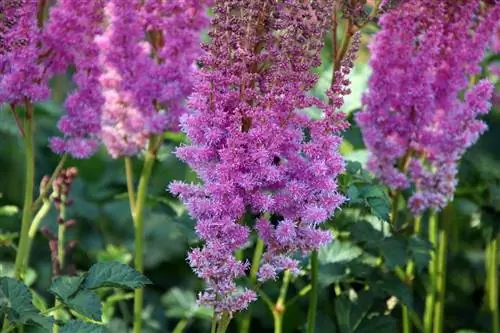
Planting partner
Various plants are suitable for the surroundings of the magnificent spars. You can plant the following specimens as partners. The combination fits visually and the nutritional requirements also complement each other:
- Anemone
- Monkshood
- Fern
- Funkia
- Bellflower
- Silver Candle
- Ornamental grasses
Plants & Planting Time
When planting, you should ensure there is an appropriate distance between individual plants. With conventional varieties there should be 40 cm of space between two specimens. For dwarf forms, approx. 25 cm is sufficient. Planting astilbe is possible twice a year. You can either plant the magnificent spars in spring or sow them in autumn.
Bloom & Cutting
The flowering time of astilbe varies depending on the variety. After all, there are different varieties. Most varieties bloom between June and September. Then upright flower candles are created, which consist of several flowers. These can be white, red, purple or pink. In autumn the flowers turn brown, so that the plants visually enrich the garden even in autumn.
Pruning the astilbe regularly is recommended. Pruning close to the ground can be done in spring or autumn to support the growth of the plants.
Propagation
If you want to propagate the astilbe, you can do this yourself. To do this, garden owners dig up the roots in spring or autumn. The root ball is then separated into at least two parts. A sharp knife is suitable for this. In principle, more segments are possible. It is important that a part always has two eyes. Now you can bury the root piece to the same depth. A young astilbe plant will then form.
Note:
It's best to divide the plants every four to five years. In this way you prevent bare spots and at the same time increase your plant population. At the same time, the magnificent spars then bloom much more vigorously.
Winter protection
Astilbe is a plant that is generally hardy. However, the plants cannot tolerate waterlogging in winter. Consequently, winter protection is required. Brushwood is ideal for partially covering the astilbe. However, you should not cover the entire specimen with leaves and mulch, as this could lead to rotting. With protection, the plants can overwinter in the pot frost-free. It doesn't matter whether the magnificent spars are in the light or dark in winter.
Usage
The magnificent spars are so-called shade perennials. These are ideal for parks or gardens to enhance shady areas. The colored flowers are a visual enrichment. The numerous flowers are also used as cut flowers. They last for several days in a vase.

